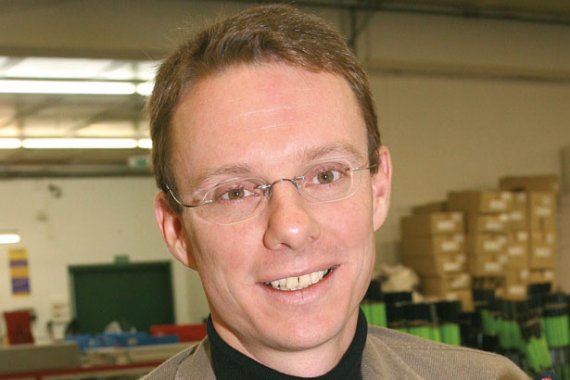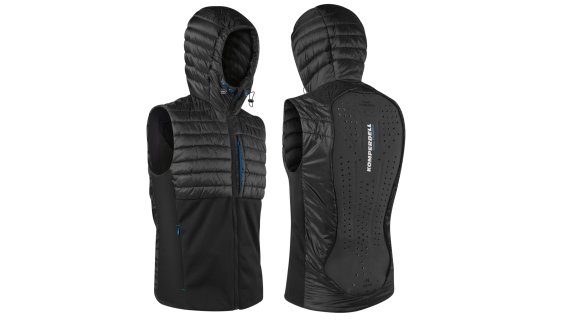
Komperdell offers hardware products for outdoor sports. Sticks, protectors and snowshoes are the main categories. Founded in 1922, the company is still family-owned. It is based in Mondsee in the Salzburger Land, Austria, where it develops and manufactures all its products.
In an interview with ISPO.com, CEO Thomas Roiser explains what the right protectors are all about and why a European safety standard is slowing down further progress.
ISPO.com: Mr Roiser, how is the market for sports protectors developing?
Thomas Roiser: Very good. There have been continuous growth rates for about ten years. But the market volume could also be even higher in relation to the number of skiers.
Why has this potential not yet been fully exploited?
The conventional protector is a foreign body. Many people I talk to say: I don't want to have to wear another part of my body. In other words, the protector has to protect, but people don't want to feel it. And on this point we offer a good solution with our new Casual line. We build the protector into the midlayers, so you don't feel like you're wearing an extra part.

Is Komperdell the only brand that offers such a construction?
Yes, it is crucial that we have the necessary know-how in-house, as we manufacture foam textiles with our Camaro brand. We are the only protector brand to manufacture the impact protection foams ourselves. The result are products that are jacket and protector in one. Others make a protector plate and then insert it into a jacket or vest. The wearer still has the feeling of having a foreign body on his body.
What are the overall characteristics of technological development in the protector sector?
A few years ago, the hard shell protector was the predominant protector, but now it is the so-called Soft Protector, which we have introduced with a viscoelastic foam that deforms on impact. It was frowned upon at first, but then became established. The flexibility of the latest protectors is estimated to be three to four times as high as three or four years ago. The protector body is much better on the skin. He used to be stiffer, it was more like a record.
We want the protector to adapt to the shape of the body, so we're at 90 percent, I think. In addition, our protective performance is now very high, and the residual force values for our protectors are less than five kilonewtons. This is far better than the standard requires, but we only produce for the higher level 2 of the current European standard for protectors.*

In your opinion, does the valid European standard fulfil its purpose?
The current standard works well if the manufacturers see it as a minimum standard. But standardisation does not promote innovation in principle. And from my point of view, the protection zone in the norm is too small. Many protectors on the market protect neither neck nor lumbar vertebrae as they are designed. Our back protectors have a protection zone that is at least 50 percent larger than that of the competition. For us, safety comes first, that is the main purpose of a protector. We are a family business, I don't want and can't afford to do something I can't stand behind, that's why we go beyond the norm in the area of protection.
But manufacturers can certainly influence the development of standards?
Of course, there is always a tendency in the standards committees for companies to represent their own interests. And, of course, the larger companies can enforce theirs better.
Are protectors a worthwhile product for retail?
Yes, a protector needs good advice, this is the chance for the retailer. However, the customer has to deal with the product to be able to advise the customer in such a way that the protector that is suitable for the customer will be available in the end.
What is important in detail?
The most important thing is that the protector fits the length of the back. Besides, it is decisive for which application the customer needs the protector. The coccyx protection, for example, is important when snowboarding. The protector must be combined with good shorts and care must be taken that the protector does not slip up too far.
How do you support the retailer in advisory competence?
We do a lot to ensure that the retailer can provide the consumer with important information. We offer training, education and information material for this purpose. In our house, but also via the sales force of the retails themselves. Because our customers deserve us to move towards them, that's just the way it should be.
*The European standard EN1621-2 distinguishes between safety levels 1 and 2: the higher level 2 allows up to 9 kilonewtons (kN) of residual force to act on the protector on impact.
- Awards
- Mountain sports
- Bike
- Fitness
- Health
- ISPO Munich
- Running
- Brands
- Sustainability
- Olympia
- OutDoor
- Promotion
- Sports Business
- Textrends
- Triathlon
- Water sports
- Winter sports
- eSports
- SportsTech
- OutDoor by ISPO
- Heroes
- Transformation
- Sport Fashion
- Urban Culture
- Challenges of a CEO
- Trade fairs
- Sports
- Find the Balance
- Product reviews
- Newsletter Exclusive Area
- Magazine







